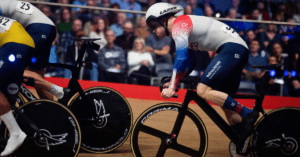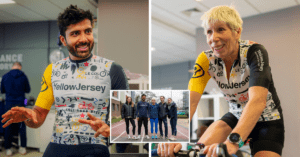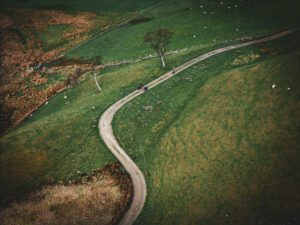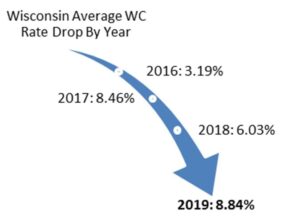A Norwegian Autumn Adventure

I could already spot the stunning autumn colours from tiny windows of the plane. Although muted in a layer of mist, the sight excited me. The band of clouds shortly afterwards turned into rain, but it couldn’t dampen my feelings. I was buzzing to spend a few days in Norway. My first trip since almost a year of not leaving the UK was the long-awaited opportunity to visit my partner Louise, who’d recently taken up a role as associate professor at NMBU in Ås, about 35km south of Oslo in Norway.
After two days filming with the BBC Scotland Adventure Show in the Scottish Borders right before my departure, I had no time and energy to pack my bike and take it with me. Louise organised an old bike from her friend for me to use, which saved me the (reasonable) £30 charge from Norwegian to bring my own bike. I only arrived with some bikepacking bags, some basic cycling kit and a few bottles of wine as a gift. If you are looking for a budget travel destination, then I’d recommend looking further and not reading on. Compared to the UK, you can almost double all prices, except public transport. When it comes to having a drink every now and then, you can at least triple the cost.
However, despite the high living expenditure, Norway is a dream destination for bikepacking. Everyone in Norway enjoys the right of access to and passage through uncultivated land in the countryside. The right is an old constitutional law called the ‘allemannsrett’ (the everyman’s right), that was codified in 1957 with the implementation of the Outdoor Recreation Act. Similar to the Scottish Outdoor Access Code all visitors are expected to show consideration for farmers and landowners, other users and the environment. It is permitted to camp for one night only and at least 150 metres away from the nearest inhabited house or cottage, and campfires are not allowed in the forest areas between 15 April and 15 September.
While it wasn’t on my radar until I arrived, Oslo is also home to innovative players in the bike industry, too. This is no surprise given the excellent cycling infrastructure in and around the city. In contrast to most cities in the UK, segregated and well-signposted cycle paths are the norm, not an exception. Hire bikes provided by Oslo City Bike, similar to London’s Santander Cycles, are easily available in the city centre. Public transport like trains, buses and trams can be booked using an app. Trains have sufficient spaces for bikes, and some of the buses accept bikes as well. Bikes usually cost the same as a child’s ticket to bring on board.
Instagram provided me with a great opportunity to connect with local companies like FARA. The verb ‘at fara’ is an Old Norse word meaning ‘to venture’, and FARA Cycling uses clean designs and a carefully curated colour palette to create beautiful gravel, road and all-road models. Time was against me and I didn’t get to visit their shop and test one of their bikes in Oslo this time. But I put a visit to FARA on the to-do list for the next visit, as well as a coffee with Truls Erik Johnsen and a visit to Hølen. About 40 km south of the capital the small village is home to Johnsen Frameworks, a small, highly dedicated custom bicycle frame builder.
After a few rides I was put in touch with Kindernay, another innovative Norwegian company, who were quick to jump on the opportunity to let me try one of their new Kindernay VII internal gear hubs for a weekend bikepacking trip. Oslo is surrounded by forests with a great amount of natural mountain bike trails featuring rocks of varying sizes, wet tree roots and loose branches strewn across them. They provide for excellent technical riding, but also present the perfect environment for ripping off the rear derailleur. Tired of this, the company founders Christian Antal and Knut Tore Ljøsne found the perfect solution: internal gear hubs.
While Kindernay only manufactures hubs, Jakob Deraas Grimsgaard, one of their engineers, was happy to part with one of his bikes for a few days, and mount their 7-speed hub with a 32/18 gearing (same as I used for cycling around the world) on it. The Santa Cruz Chameleon carbon hardtail mountain bike provided the perfect rig for a weekend off-road bikepacking adventure around the Oslofjord with Louise. If you are interested in more details about the hub, my review will be in the upcoming issue of Cycling UK’s Cycle Magazine.
As October is the wettest month in Norway, a waterproof jacket was needed not only on our quick test ride on Thursday night, but also for the weekend trip. Similar to Scotland the weather changes quickly here. Oslo lies at 59.9139° N, roughly 4 degrees further north than Edinburgh (55.9533° N), and the temperature difference was noticeable.
We left the small town of Ås on the Saturday morning, after prolonged rain on the Friday made us opt for a day inside instead. Although abbreviated by a day because of the weather, our weekend bikepacking was nothing short of spectacular. A gentle cruise on cycle paths took us to Drøbak. Traditionally Drøbak was the winter harbour for the Norwegian capital. In severe winters the fjord would freeze from outside Drøbak all the way up to Oslo. The small town, which also hosts an excellent bakery and aquarium, played a crucial role in Norway’s recent history. Just off the coast, and now open for the public to visit, lies the Oscarsborg fortress. Guns and torpedoes fired from here on the morning of 9 April 1940 sank the Kriegsmarine cruiser Blücher in World War II, and thus allowed for the evacuation of the Norwegian Royal Family, parliament, and cabinet, and for the nation’s gold reserves to be denied the German occupiers. The fortress, connected by a small ferry from Drøbak, is a great place to spend a day.
Our ride took us along the Oslofjord on a mixture of quiet coastal roads and singletrack to Ramme Gaard, an organic farm and country estate owned by billionaire philanthropist Petter Olsen. Tasty carrot cake and coffee made for a welcome first stop, and the pompous bathroom in the downstairs gallery of the hotel on the estate is worth checking out!

There is arguably no better known Norwegian than painter Edvard Munch, and few paintings as iconic as ‘The Scream’. Petter Olsen’s version of ‘The Scream’ was sold on 2 May 2012, changing hands for a record price of US$119.9 million. The businessman sold the painting to raise funds to build a museum in Hvitsten, where Munch once owned property. Also the next stop on our bikepacking trip, the small village couldn’t have been more picturesque.
Along more beautiful tracks and an old trade road we followed further in Munch’s footsteps. After a tasty late lunch of fresh mussels in Son we pitched our tent only a few hundred metres away from Grimsrød Manor on the island of Jeløy. The mansion was owned by the painter from 1913 – 16. Looking into the stormy Oslofjord and admiring its stark natural beauty, we could see why the island inspired Munch and ended a great day on the bike with pasta and tea (if you are interested in Munch, the new Munch Museum in Oslo opens on 22 October).
On the second day the ferry from Moss to Horten carried us (for free) to the western side of the Oslofjord. While we had been mostly lucky with the weather on day one, the rain soon returned. Our plan was to cycle northbound and catch two more ferries back to Drøbak. Fortunately a coffee stop to shelter from the rain in Holmestrand also gave us time to further research ferry times, and we soon found out that one of the ferries was only operating in the summer months. Drenched from the rain we returned to Horten on a different route. Our ride here had been a fairly easy affair, despite one section that required pushing the bikes up a steep slope through a beautiful woodland. It was one of those routes that was ok to do once, but not twice, so we opted for more tarmac and gentler farm tracks on the return.
Pedestrians and cyclists travel free of charge from Moss to Horten, while cars with a combustion engine pay around £20 for the crossing (electric cars only £8). We decided to spend our money on food instead. While Louise took the train back to Ås, I decided to cycle back, as the rain slowly eased. Bike and hub had so far performed brilliantly, and I had enough energy left to cruise back along a former railway line from Moss to Kjenn. The rain cleared and the remaining clouds made for a spectacular sunset.
The last section of the route offered a fantastic mixture of fast-rolling gravel roads and technical singletrack through a forest and was a fitting end to a great bikepacking weekend. Despite the rain, the Oslofjord and the beautiful surroundings provided amazing off-road cycling and made me curious for more. And no doubt there’ll be more adventures to share soon!
This route and others are included in Markus’ collection for South Norway on Komoot.
If you want to go bike packing, make sure you’re covered with bicycle insurance






